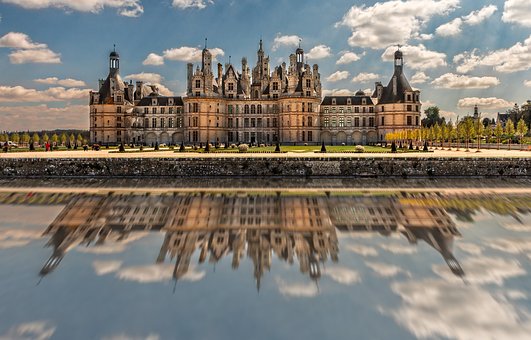 The French and Italian culture ministers met in Rome on February 28 to take a new look at a 2017 accord under which four Italian museums agreed to lend Da Vinci works — including the iconic Vitruvian Man drawing — to the Louvre in October.
The French and Italian culture ministers met in Rome on February 28 to take a new look at a 2017 accord under which four Italian museums agreed to lend Da Vinci works — including the iconic Vitruvian Man drawing — to the Louvre in October.
Bilateral relations had already soured since the right-wing government of Giuseppe Conte came to power in 2016, largely on the back of anti-immigrant sentiment, with Italy’s tough actions on migrants in the Mediterranean and its support for France’s anti-government “yellow vest” movement sparking the worst diplomatic crisis since World War II.
The cultural tug-of-war began in November when a top official told Italian daily Corriere della Sera: “The French can’t have it all.”
Lucia Borgonzoni, the number two in Italy’s culture ministry and a member of the anti-immigration League party, called for a rethink of the accord reached with the previous government, arguing that it was lopsided in favor of France and deprived Italians of their right to celebrate Leonardo.
“Leonardo is Italian,” she said. “He only died in France. The loan of these paintings to the Louvre will put Italy on the sidelines of a major cultural event.”
French Da Vinci specialist and museum consultant Jacques Franck scoffed at the remark, telling the online franceinfo news site: “You have to realise that at the time Italy was not yet a nation: it was a set of independent principalities and republics.”
He noted as well that the Louvre exhibit in October will come a full five months after the death anniversary on May 2.
“The Alps are higher now”
Lucio Caracciolo, director of the Limes geopolitical review, in an op-ed in La Repubblica
The souring in what the French call trans-Alpine relations broke out in June last year when Italy prevented charity rescue boats with migrants on board from docking at its ports. Macron blasted Rome’s “cynicism and irresponsibility” and likened the rise of far-right nationalism in Europe to leprosy. In November, relations went further downhill when deputy prime minister Luigi Di Maio made an unannounced visit to France to meet with anti-government protesters, prompting Paris to recall its ambassador to Rome for consultations.
An op-ed in Italy’s La Repubblica daily asserted: “The Alps are higher now.”
On February 28, Culture Minister Alberto Bonisoli, of Italy’s anti-establishment Five Star Movement, met with his French counterpart Franck Riester to clear the air, and assured that the loans of Da Vincis to the Louvre would not be cancelled, as suggested by deputy PM Matteo Salvini. But a definitive list remained elusive.
Fewer than 20 Da Vinci paintings survive, and the Louvre has five of them — plus 22 drawings.
The loans agreed for the October show, in addition to the Vitruvian Man and studies for the Battle of Anghiari housed in Venice’s Gallerie dell’Accademia, include La Scapigliata from Parma’s National Gallery; the Portrait of a Musician from the Pinacoteca Ambrosiana in Milan; and the unfinished painting of Saint Jerome from the Vatican’s Pinacoteca. The Adoration of the Magi, held at the Uffizi Gallery in Florence, is not in good enough condition to make the journey.
Negotiations for the accord were long and tortuous. France used as a bargaining chip the fact that it lent two Da Vincis — the only two fit to travel — for display during Milan’s 2015 universal exposition. They were La Belle Ferronnière et le Saint John the Baptist. The Louvre also agreed to lend its Raphaels to Rome’s Scuderia del Quirinale next year, which will mark the 500th anniversary of that artist’s death.
The Louvre’s collection includes the master’s last three paintings and the only ones he produced in the last 20 years of his life, as well as a large number of drawings.
The Louvre has also lent Da Vinci drawings to Florence’s Palazzo Strozzi, which has already opened an exhibit on Leonardo’s mentor Verrocchio.
“Da Vinci should not be a symbol of discord”
Historian Jean-Yves Frétigne
Historian Jean-Yves Frétigne, speaking to franceinfo, decried the row, saying that Da Vinci, who “should be a symbol of bilateral ties, has become a symbol of discord…. Taking art hostage, taking the symbol of humanism hostage in particular, is really a shame.”
